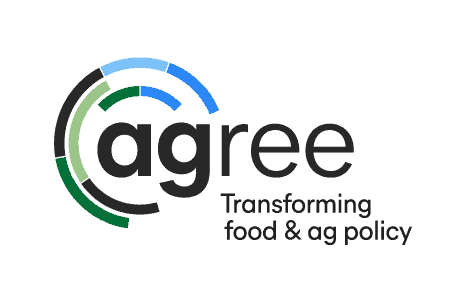Small Farms, Big Ag Data, Tremendous Opportunity
10 October 2018October 10, 2018
If you ask how big ag data can help small farms, you will probably get peppered with questions. What is a small farm? What is ag data?* And what makes it BIG? Is a small farm 4 acres in size? Or 400 acres? Or 1,400? Turns out it may not matter when it comes to defining how big ag data** can help, thanks to scalability. That’s one of the key messages that emerged from AGree’s second in a series of dialogues about ag data.
Dorn Cox, from Wolfe’s Neck Center in Maine, described his vision of an “agricultural observatory system” made possible by miniaturization and the “internet of things” that allows farmers to connect directly with one another and with markets to introduce more diversity into their operations and manage complexity at smaller scales. The tools that facilitate site-specific recommendations based on big data are in many cases scale independent and can benefit farms both large and small. The challenge as he sees it is to aggregate the tools that already exist and make them interoperable – powered by accessible data – so that they democratize access to ag knowledge and support farmers everywhere.
Robert Blair, an Idaho farmer and member of the AGree Conservation and Crop Insurance Task Force, is actively using ag data to manage his 1,300-acre farm (which he considers small based on where he lives). From drones to soil sensors and GPS, he’s using technology and data to make better management decisions which reduces his costs, increases productivity, increases profit, and reduces environmental impacts. He believes the potential is limitless, but the barriers are also formidable. They range from government policies that forbid data sharing to internet speeds in rural areas that make uploading data to the cloud nearly impossible. He said, “I’m trying to put a firehose worth of data through a straw. It doesn’t work.”
It became clear during the discussion that ag data means different things to different farmers. Pamela Hess, with the Arcadia Center in Virginia, is a tireless advocate for regional food systems and supporting healthy food options in underserved neighborhoods. Her idea of big data and scalability centers on a software system developed to help Arcadia track sales of produce at their mobile markets throughout DC’s poorest neighborhoods and the launch of a healthy eating “club card” program. In fact, they use the product sales data to help their customers develop personalized nutrition plans. Hess said, “Data should help us calculate the costs of health creation instead of just wealth creation.”
Hess believes the software – called Farmers Register – could benefit sellers at farmers’ markets across the nation (41 farms are currently piloting it) and even serve as a data source to inform risk management tools such as crop insurance for small growers. She noted that the software has been developed, only an iPad is needed to run it, and any farmer can use it. The challenge is scaling so more farmers can afford it.
Josh Woodard, with the startup Ag-Analytics and Cornell University and also a member of the AGree Conservation and Crop Insurance Task Force, believes protecting privacy is key. He says farmers are willing to share their data once they are confident it will be protected, but right now it is difficult for university extension to interact with farmers in this capacity. His company developed an agricultural farm management platform that allows farmers to easily zoom down into their fields and pull in a variety of real-time and historical data to make better informed decisions about planting, soil health, and water usage.
The notion that government agency silos stand in the way of meaningful ag data aggregation and analysis for both producer and public benefit is part of the reason AGree’s Economic and Environmental Risk Coalition spent five years developing recommendations and cheered the inclusion of the Ag Data Act in the Senate-passed farm bill. The goal is to break down these barriers and provide data analysis to benefit farmers and the environment in a manner that inspires trust and protects privacy.
The panelists agreed there is a universe of possibilities when it comes to ag data. These are early days and to ensure broad benefit across agriculture, we need infrastructure to support data integration, better broadband in rural areas so producers can participate, and extension agents and others who are facile with data analysis and can help farmers use data to make better management and market decisions. Dorn Cox compared ag data-driven agriculture as equivalent to deep space exploration. It’s a public science in which each of us has a collective share in the outcome. He expressed tremendous confidence that farmers’ costs will go down and environmental benefits will go up – whether on small farms or large – if we can take full advantage of all that big ag data can deliver.
____________________
* Ag data generally consists of production data (inputs), yield data (outputs) and market data (pricing, customers, etc.)
** Big data is characterized by its volume, variety, and the velocity with which it is generated. It comes from remote sensing and is also uploaded from combines, drones, soil monitors, etc.
AGree Discussion Series: Harnessing (Big) Data for Small Farmers
Listen in on the discussion about the universe of possibilities for harnessing agriculture data to support farmers and benefit the environment.

